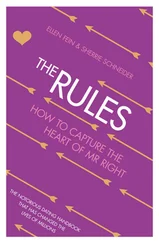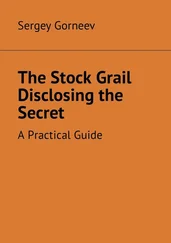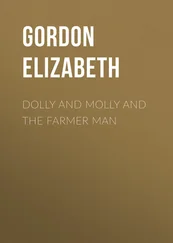Description: Lawrence Dennis (1893-1977) was an American economist, political theorist, and advocate of fascism. Correspondence and writings, relating to fascist and isolationist movements in the U.S., and to American politics and foreign policy. Includes copies of the newsletters edited by Dennis, and subscription records. Correspondents include Harry Elmer Barnes, Charles A. Beard, William F. Buckley, Jr., Willis A. Carto, William H. Chamberlin, Bronson Cutting, George E. Deatherage, Max Eastman, Garet Garrett, Devin A. Garrity, DeWest Hooker, Herbert Hoover, Willmoore Kendall, Alf M. Landon, William Langer, Clare Boothe Luce, Ernest Lundeen, Russell Maguire, Felix Morley, General George Van Horn Moseley, W.C. Mullendore, Henry Regnery, Porter Sargent, George E. Sokolsky, Lothrop Stoddard, Charles C. Tansill, Dorothy Thompson, George Holden Tinkham, Francis Everett Townsend, Ralph Townsend, Freda Utley, General A.C. Wedemeyer, Burton K. (and Mrs.) Wheeler, General Robert E. Wood, and John T. Wood.
Reference:
Gerald Horne, The Color of Fascism: Lawrence Dennis, Racial Passing, and the Rise of Right-Wing Extremism in the United States (New York and London: New York University Press, 2006).
Finding aids:
http://www.oac.cdlib.org/findaid/ark:/13030/tf7n39n994/entire_text/
http://www.oac.cdlib.org/view?docId=tf7n39n994;query=;style=oac4;doc.view=entire_text
http://www.oac.cdlib.org/data/13030/94/tf7n39n994/files/tf7n39n994.pdf
[0776] The Christopher DeNoon Collection for the Study of New Deal Culture
Location: Special Collections and Archives, The Wolfsonian-Florida International University, 1001 Washington Avenue, Miami Beach, FL 33139
Description: This collection contains more than 250 rare books, guides, periodicals, pamphlets, playbills, and other ephemera produced in America during Franklin D. Roosevelt's Administration, including leftist and rightwing critiques of FDR's policies and projects. Critiques from the right are such works as Hell Bent for Election, by James P. Warburg (Garden City, N.Y., Doubleday, Doran & Company, Inc., 1935); The Roosevelt Red Record and its Background, by Elizabeth Dilling (Kenilworth, Ill., Chicago, Published by the author [c1936]); and Smoke-Screen, by Samuel B. Pettengill (New York, Chicago, Kingsport, Tennessee, Southern Publishers, Inc. [c1940]), which warned that the United States was moving toward socialism.
Websites with information:
http://www.wolfsonian.org/research-library/research-at-the-museum/special-collections-and-archives/the-christopher-de-noon-collection
http://wolfsonianfiulibrary.wordpress.com/2010/12/01/roosevelt-the-reds/
[0777] Denver Police Department Intelligence Bureau Files, late 1950s-2002 (bulk 1980-2002), WH1911
Location: Western History Collections, Western History and Genealogy, The Denver Public Library, Level 5, 10 W. Fourteenth Ave. Pkwy, Denver, Colorado 80204-2731
Description: The Denver Police Department Intelligence Bureau was founded in 1953 to develop and process information on organized crime, activity by the criminal element, individuals in groups of special interest regarding the safety of the public, dignitary protection, the background investigation of police applicants, and the arrest of outstanding fugitives. In addition, the bureau performs specialized investigations. The collection contains primarily copies of newspaper clippings documenting political and social protest groups; organized crime, especially gangs; and specific types of crime such as forgery, robbery, and homicide. Files regarding political and social protest groups from the last 30 years of the 20th century contain the most historically significant material. Organizations from all sides of the political spectrum are represented in these files, including the American Indian Movement, Operation Rescue and the Ku Klux Klan. Material includes copies of brochures, flyers, photographs, articles, handbooks and newsletters. The photographs document public gatherings. Files on Abortion; American Life League: Lifefax (weekly newsletter); Anti-Defamation League: Special Report Paranoia as Patriotism: Far-Right Influences on the Militia Movement, Federation of Klans Handbook (copies); Aryan Nations; Christian Defense Coalition; Christian Advocates Serving Evangelism; Christian Crusade for Truth; Colorado Right for Life; Colorado Minutemen; Colorado First Light Infantry; Colorado March for Liberty; Colorado March for Life; Committee to Restore the Constitution; Constitutionalists; Cults; Demonstrations - Anti-Abortion: photographs; Demonstrations - Pro-Life: photographs; Extremism of the Right by Anti-Defamation League of B'nai B'rith; Freemen; Fully Informed Jury Association; Gospel Plow; Hate Crimes: Hate Groups in America: A Record of Bigotry and Violence (Anti-Defamation League of B'nai B'rith, 1988) [online at https://www.ncjrs.gov/pdffiles1/Digitization/122995NCJRS.pdf]; Hate Crimes; Jewish Armed Resistance (JAR); John Birch Society bulletin; Ku Klux Klan; Militia; Militia groups; National Association for the Advancement of White People: NAAWP News (newsletter), The Road Back (Noontide Press); National Caucus of Labor Committees: The New Federalist (newsletter), New Solidarity (newsletter), Law Enforcement Reform Act of 1976 by Lyndon LaRouche, Jr.; National Socialist White People's Party; Operation Rescue; Posse Comitatus; Pro-Life Action Network; The Denver Ghost (Rocky Mountain Resistance); and We the People.
Websites with information:
http://eadsrv.denverlibrary.org/sdx/pl/western.shtm
Finding aid:
http://eadsrv.denverlibrary.org/sdx/pl/toc.xsp?id=WH1911&qid=sdx_q5&fmt=tab&idtoc=WH1911-pleadetoc
&base=fa&n=15&ss=true&as=true&ai=Advanced
[0778] Department of Human Resources, Eugenics Commission, General file, 1933-1974
Location: North Carolina Department of Health and Human Services, 2001 Mail Service Center, Raleigh, NC 27699-2001
Description: The Eugenics Board of North Carolina (EBNC) was formed in July 1933 to ensure the constitutionality of the state's sterilization laws. Courts deemed the 1929 sterilization law to be unconstitutional because it lacked an appeal process. With the Eugenics Board's creation in 1933, an appeal process was incorporated. North Carolina was the only state to include non-institutionalized citizens. The Eugenics Board of North Carolina practiced negative eugenics (discouraging reproduction by persons having genetic defects or presumed to have inheritable and undesirable traits). From 1929 to 1940, for instance, whites comprised almost four-fifths of the sterilizations. During the 1960s, when social workers had the authority to recommend sterilizations, the number of African American sterilizations increased dramatically (approximately ninety nine percent). In 1971, an act of the legislature transferred the EBNC to the then newly created Department of Human Resources (DHR), an umbrella organization which consolidated more than 300 state agencies. The department later became the North Carolina Department of Health and Human Services (DHHS). Under a 1973 law, the Eugenics Board was transformed into the Eugenics Commission. Correspondence and subject files relating to the Commission's activities, including minutes of administrative conferences of county welfare directors, attorney general's opinions, biennial reports, 1934-1968, budgets, information on relationships with other state agencies, newspaper clippings, miscellaneous reports, and information on the NC Maternal Health League and the American Birth Control League. Includes 1948 Eugenics Board Manual (Eugenics Board of North Carolina, 1948) and 1960 Eugenics Board Manual (Eugenics Board of North Carolina, 1960).
Reference:
Lutz Kaelber, "Eugenics/Sexual Sterilizations in North Carolina," 2014, http://www.uvm.edu/~lkaelber/eugenics/NC/NC.html.
Websites with information:
Читать дальше












